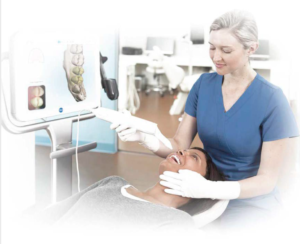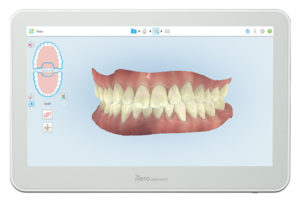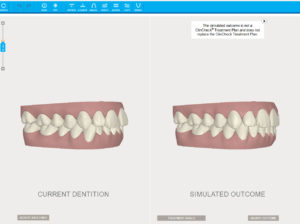Our Services
Dollarton Dental offers all aspects of dentistry with the latest in dental technology.
Fillings
The advances of modern dentistry are many, but we yet have to find a way of reversing the ravages of tooth decay. Once caries has been detected in a tooth the only way to stop its progression is to remove the decay until sound tooth structure has been reached, and replace it with a filling material.
Fillings fall into the following categories:
Silver fillings
This is one of the commonest permanent filling materials and has been used successfully for the past 150 years. It is durable, economical and easy to use.
Composite resins
This filling material is a tooth coloured plastic mixture filled with glass. It is esthetically pleasing as it can be matched to fit the shade of the tooth. Composite is placed in layers, each layer being hardened by means of curing light.
Inlays
These types of fillings are made up of gold or porcelain and require two visits. An impression is taken of the tooth after the decay is removed and the filling in gold or porcelain and the inlay is cemented in at the second visit.
All filling materials have advantages and disadvantages, after a complete examination of your mouth we will be able to recommend the filling best suited to your needs.
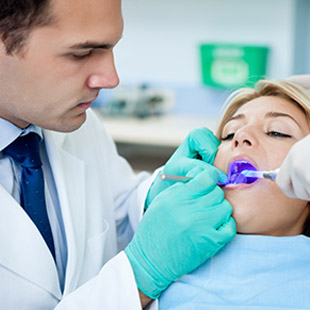
Crowns
A crown or cap is a fabricated covering that encases the tooth entirely to the gum line.
Does your tooth need a crown?
This procedure is undertaken to retain and strengthen a tooth in the following situations:
- When a tooth is broken or is extensively decayed.
- Has a large failing filling.
- When a portion of tooth structure is missing following a root canal.
- To replace tooth structure lost due to excessive wear.
Crowns are generally all three types; all porcelain, gold and porcelain fused to gold.
Porcelain
Porcelain crowns offer superlative esthetics and are consequently often placed on front teeth. They may not be the ideal choice for back teeth as they are often not strong enough to withstand chewing forces.
Gold
Gold crowns have for many years been the ideal choice for full coverage of back teeth. They can be fabricated to a very accurate fit and are strong enough to withstand biting forces without sustaining damage, resulting in long lasting and durable restorations. The similarities in wear rates between natural teeth and gold crowns make them very compatible ad does not promote excessive wear if opposing teeth. However, the metal color does not make it the most esthetic choice of crowns.
Porcelain fused to gold crown
Porcelain fused to gold crowns offer a happy medium between gold and all porcelain crowns. They are made up of an inner shell of gold overlaid with an outer layer of porcelain that is fused to the metal. These crowns offer the esthetics of porcelain and the strength of metal. They are good choices for both front and back teeth.
The procedure for fabricating and placing a crown generally requires two appointments. At the first appointment, the tooth is numbed followed by the removal of any decay or rough edges ad refinement of the tooth to create adequate room for the fit of the crown. An impression of the crown is taken using impression putty. A temp crown is provided to protect the tooth until the permanent crown is ready.
For porcelain crowns, a shade is selected that accurately matches the adjacent teeth. Plaster models created from the impressions provide the dental technician with a replica of the tooth upon which the crown is fabricated and fitted. At the second appointment the temporary crown is removed, the permanent crown is tried in to ensure proper fit and function following which, it is permanently cemented in place.
Crowns remain one of the best techniques available to restore compromised teeth to full function, strengths and esthetics. Their long life span allows them to be a cost-effective method of enhancing and prolonging the retention of teeth resulting in a stable and functional tooth restored to its original form.

Bridges
A Healthy mouth requires a full compliment of teeth to function properly.
Missing a Tooth?
A missing tooth, whether it is an anterior one affecting your smile or a posterior one affecting your chewing, can create a variety of problems:
- Loss of function as upper and lower teeth fail to meet.
- Drifting of teeth causing unsightly gaps.
- Food impaction leading to gum disease.
- Over eruption of the opposing tooth into missing space.
- A shift in the bite putting stress of the joint leading to T.M.J. disorder.
A bridge consists of three basic units, a false tooth, replacing the lost one and two “anchor” crowns one on either side to which it is attached.
The teeth on either side of the missing space are needed to support the bridge and are called abutment teeth. The process of fabricating and fitting a bridge generally requires two appointments.
Orthodontic treatment is a long-term commitment, but the benefits of a healthy smile far outweigh the time involved in accomplishing the treatment.
At the first appointment
the abutment teeth are shaped and prepared to accept the bridge. An accurate impression is taken from which our laboratory technician will custom design and fabricate your bridge, Special care is taken to ensure a perfect fir and to match the natural shading of adjacent teeth. Temporary crowns are places over the abutment teeth to protect them until the permanent bridge is ready.
At the second appointment
The temporary crowns are removed and the bridge is cemented into place. Bridges function similarity to natural teeth and an help your speech and chewing function while enhancing your smile.

Porcelain Veneers
Porcelain veneers or laminates are thin facings of strong and extremely cosmetic porcelains permanently bonded to the teeth to improve the shape, position and color of the teeth. This treatment is ideal for enhancing the function and esthetics of chipped, broken, misaligned, discoloured, crowded or spaced teeth in a very conservative manner.
Porcelain veneers create a natural translucent appearance while offering a long-lasting restoration for many years. Proper home care and regular dental examinations are crucial to the longevity of these restorations, which also resist staining due to their very smooth surfaces.
Porcelain veneers are very conservative restorations as only a minimum amount of tooth structure is removed. In some cases, this procedure uses no preparation of the tooth surface and preserves all of the sound tooth structure. Once the impressions are taken, the technician fabricates custom veneers from the created mold. At the second appointment the veneers are bonded on to the face of the tooth resulting in a natural looking, durable restoration.
Porcelain veneers offer maximum esthetics with minimum tooth reduction. They can easily support normal biting forces but caution is advised when biting into hard objects. Those who grind or clench their teeth are advised to use a night guard to protect their veneers.
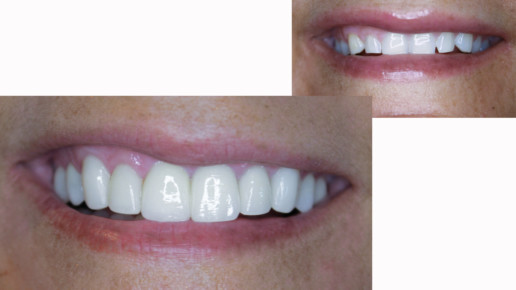
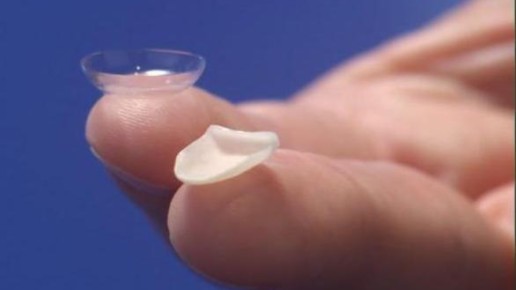
Laser Dentistry
Soft tissue dental laser is intended for use in a wide range of oral applications and pain management. From gum inflammation to surgical procedures and cosmetic dentistry.
Lasers have been used for oral tissue treatments for more than thirty years and proven to be a precise and effective way to perform many dental procedures. The use of laser technology has been shown to be a viable and effective adjunct to conventional dental techniques, and a useful alternative in certain situations. Lasers represent an innovative, more precise, more efficient and a gentle approach for specific hard and soft tissue applications when compared with previous procedures and conventional tools, such as drills and blades.
To provide the best in patient comfort and minimally invasive procedures, dentists must maintain familiarity with the newest instruments and techniques available through innovation such as dental lasers.
Advantages:
- Procedures performed using soft tissue dental lasers may not require sutures (stitches).
- Since laser does not generate heat, vibration or pressure, many dental procedures can be performed nearly pain-free which requires less or even no need for local anesthesia.
- Due to its conservative cutting action, practitioners perform many procedures with little or no bleeding and less post-op swelling.
- Due to the ability to kill bacteria, soft tissue laser alleviates impending signs of inflammation and lessens the incidence of post-procedure bacterial and viral infections.
- Damage to surrounding tissue is minimized. Soft tissue laser removes affected tissue precisely while leaving surrounding areas unaffected. As a result, much less collateral damage to otherwise healthy surrounding tissues is expected. This conserves more of the precious structure and helps patients to maintain their natural soft tissue longer.
- Laser facilitates healing and repair of the tissues so wounds heal faster after treatment.
- Patients tend to experience far less post-operative discomfort and many experience virtually no postoperative pain so the need for pain medication in many cases will be no to minimal and patients can return to work the same day.
- Reducing numbers of appointments due to less complications following using laser.
- Reducing stress and improving patient comfort. Patients will feel more comfortable and less anxious during treatment. If you consider yourself somewhat of an anxious dental patient and are seeking extreme safety and comfort, you might consider laser techniques for your treatment.
Indications:
Lasers are used in both cosmetic and restorative dental procedures. Some of the most common treatments performed with soft tissue lasers are:
- Gingival Sculpting. Soft tissue lasers can reshape gum tissues to expose healthy tooth structure and improve the appearance of a gummy smile and to enhance a smile’s esthetics in a minimally invasive way. Dental lasers also can be used for recontouring gum tissues to provide a stronger foundation for the placement of a restoration such as a crown.
- Temporomandibular Joint Treatment: Soft tissue lasers may be used to quickly reduce pain and inflammation of the temporomandibular jaw joint.
- Cold Sores and Canker Sores: Low intensity soft tissue lasers minimize healing time and reduce pain associated with oral lesions such as cold sore or canker sore.
- Muscle Attachment (Frenum): A laser frenectomy is an ideal treatment option to release muscle tension which is causing gum recession or spacing between teeth. Also for children who are tongue tied (restricted or tight frenum) laser frenectomy may help to eliminate speech impediments.
- Soft Tissue Folds (Epulis) and Benign Tumors: Soft tissue lasers may be used for the painless and suture-free removal of soft tissue folds usually caused by ill-fitting dentures or benign oral tumors.
- Teeth Whitening: Low intensity soft tissue lasers may be used to speed up the bleaching process associated with teeth whitening.
- In conjunction to scaling and root planing, soft tissue laser is helpful in eliminating bacteria and reducing the inflammation and bleeding of the gum tissue.
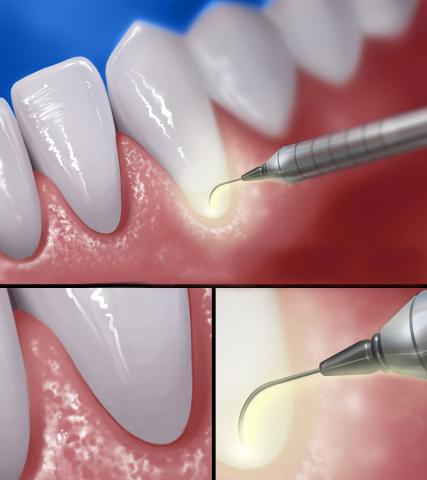
Invisalign (Clear Braces)
Orthodontics is the perfect way to create an attractive smile, and although an orthodontic evaluation is usually best at around age eight, it is never too late to initiate treatment.
The benefits of orthodontics are many and the most obvious is a winning smile that can be achieved by aligning the natural teeth in an attractive position in the mouth. This also improves the contours of the face and boost a person’s self-esteem and confidence. If left untreated, misaligned teeth can be difficult to clean with subsequent gum problems and tooth decay and in some cases speech impairments. Jaw joint (TMJ) pain and associated headache can sometimes be attributed to crooked teeth and incorrect bites.
Orthodontic treatment is a long-term commitment, but the benefits of a healthy smile far outweigh the time involved in accomplishing the treatment.
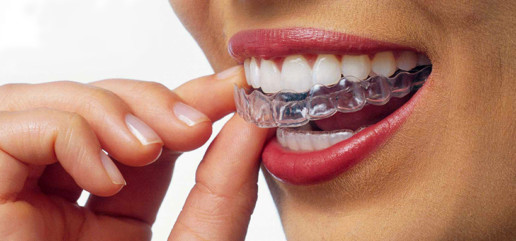
The First Step
An orthodontic evaluation is usually the first step taken prior to planning treatment. The teeth, jaws joints, and the present bite are all taken into consideration.
- Xrays of the skull are taken, and accurate tracings are done to plot the correction of the bite.
- Diagnostic models of the teeth are obtained to evaluate how the teeth fit together.
- Photographs are also taken.
Dental Implants
An implant is a small biocompatible titanium screw that is inserted in the jaw to replace the root portion of a tooth.
Dental implants have been shown to actually integrate with the surrounding bone to form a solid foundation for the porcelain tooth that is placed on top.
Dental implants can replace a single tooth or several teeth and can also be used to stabilize complete upper or lower dentures. The use of implants provides patients with a superior technique to replace missing teeth resulting in improved comfort, speech, chewing and a better sense of self-esteem.
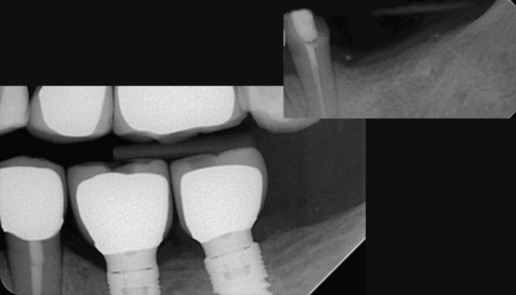
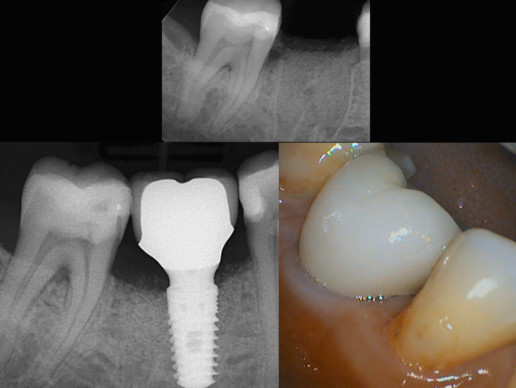
Implants
The basic steps are as follows:
- A titanium screw is placed in the jawbone and left for a period of 3-6 months until it fuses to the bone forming a firm base.
- The screw is then uncovered and a post is attached to the now firmly established implant.
- Finally a natural looking porcelain tooth that blends in with the natural facial characteristics is secured to the post.
Intraoral Scanning
The iTero Element Scanner is a state-of-the-art digital impressionsystem that eliminates the need for messy putty in your mouth.
Even under the best of conditions, traditional impressions were still uncomfortable, occasionally unreliable and unpleasant tasting. That’s why we’re proud to offer goop-free, full digital impressions with the revolutionary iTero® ElementTM Scanner.
Not only is a digital impression more comfortable, it’s also much more accurate. The scanner takes an incredibly detailed impression of your teeth and gums. Once
the scan is complete, your dentist will then have a 3D model of your mouth that can be used to create detailed crowns, bridges, implants, and Invisalign® clear aligners and retainers. This digital accuracy eliminates the need to retake impressions, keeping your time in the chair to an absolute minimum.
THE WAND
Your dentist uses the iTero Element Scanner’s wand to capture images of your tooth surfaces and gum tissue.
THE SCAN
You and your dentist can follow the scanning progress on the screen.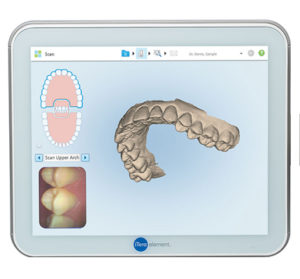
THE 3D MODEL
The completed scan is available as a 3D model that your dentist can use to begin planning your Invisalign treatment.
THE INVISALIGN OUTCOME SIMULATOR
Visualize how your teeth may look after Invisalign treatment. Seeing the “end result” before you decide can take the guesswork out of your decision and put you on the path to the smile you’ve always wanted.
Advantages of intraoral scanning:
- COMFORTABLE
• No gooey mess associated with impression materials
• Breathe and swallow as you normally would
• No unpleasant taste or smell
- FAST
• View 3D scans onscreen with your dentist immediately
• Faster delivery times of your personalized Invisalign® treatment plan
- ACCURATE
• Allows for a precise fit of crowns, bridges, implants, and Invisalign clear aligners
and retainers
• Eliminates the need to retake impressions
Dentures
A denture is a removable appliance that replaces missing teeth. Dentures are made of an acrylic or metal base with porcelain or acrylic teeth.
To custom fit a natural looking denture, accurate and detailed impressions of the remaining oral structures have to be taken. Further measurements of the jaw movements must also be recorded in order to ensure that the completed denture will function in harmony with the rest of the mouth.
Proper Denture Fitting
A well-crafted custom fitted denture should satisfy the following conditions:
- Fit and feel comfortable and natural.
- Restore the function of chewing.
- Maintain the heath of the oral structures.
- Provide a perfectly natural smile.
Dentures are divided into two main categories:
Partial Dentures
These replace a few missing teeth and are constructed of metal or acrylic frame forming a removable rigid base to which the teeth are fixed. They are secured in the mouth by clasps attached to the remaining teeth.
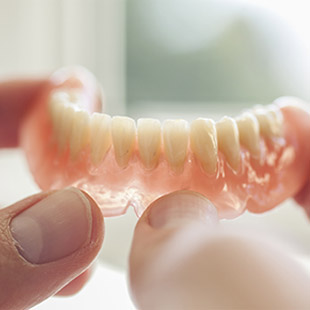
Proper Denture Fitting
A well-crafted custom fitted denture should satisfy the following conditions:
- Fit and feel comfortable and natural.
- Restore the function of chewing.
- Maintain the heath of the oral structures.
- Provide a perfectly natural smile.
Complete Dentures
This removable prosthesis replaces all the teeth in the mouth and is categorized as follows:
1. Conventional Denture
This denture is dependent on the remaining bony ridges and the suction generated from a close fit, for its retention. It is usually made to replace an already existing denture.
2. Immediate Denture
This transitional denture is inserted at the same appointment that the teeth are extracted It saves the patient the embarrassment of going without teeth while the gums are healing. The initial denture is made as a transitional or healing denture. After the extraction or loss of teeth, the underlying bone begins to heal. As it heals, the bone shrinks causing looseness of the denture. This process, takes anywhere between six to twelve months, depending on a number of factors. During that time different materials are applied to the denture so that the fit remains snug. In the first weeks after extractions a patient may require frequent adjustments. The bone, having shrunk and healed, now provides a much greater space for the placement of the teeth. Changed to enhance appearance and fit can now be contemplated.
3. Over Denture
These dentures are not solely dependent on the underlining bony ridges for their retention but gain their retention either from roots that are treated and retained in the mouth, or from titanium implants that are fused to the bone.
4. Cosmetic Denture
This is a conventional denture with a stronger emphasis on the esthetics for the more demanding patient.
Root Canal
Endodontic (Root canal) therapy treats the irreversibly damaged nerve and blood vessels of the tooth. This treatment returns the tooth to a comfortable functioning state and felicitates its preservation.
Untreated decay, a cracked or traumatized tooth and a large filling that has irritated the nerve can all cause the nerves and blood vessels inside the tooth to die. This allows bacteria to gain access into the pulp chamber, causing an infection inside the tooth. The infection can pass through the canals into the bone causing an abscess. Instead of extracting the tooth, a root canal is performed in order to remove the infection.
Endodontic therapy is probably one of the most misunderstood procedures performed in the dental office. The name is often associated with pain and is the source of many dental “jokes”. In facet exactly the opposite is true. An abscessed tooth is probably one of the more painful dental emergencies treated, and the pain is alleviated by root canal therapy.
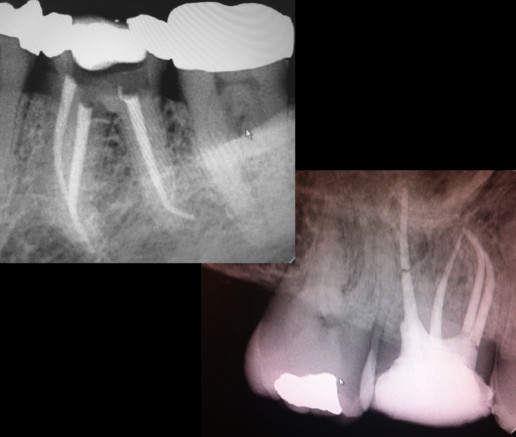
Root canal therapy steps
Root canal therapy usually requires a series of appointments:
- An opening is made into the top of the tooth in order to gain access into the pulp. The pulp and the canals are flushed with disinfectant and cleaned. A temporary seal is placed over the opening and in case of an infection antibiotics are prescribed.
- At the next appointment the canals are cleaned, shaped and filled with a rubber like material called gutta percha to seal them.
- If the strength of the tooth has been compromised a crown is usually placed over the tooth (see crowns).
Oral Cancer Screening
The goal of oral cancer screening is to identify mouth cancer early, when there is a greater chance for a cure. An oral cancer screening may just save your life!
Studies show that three people die from oral cancer everyday in Canada, making the five-year survival rate of oral cancer lower than the survival rates of breast, cervical and prostate cancer. While it accounts for a relatively small percentage of all cancers, oral cancer is dangerous because it isn’t usually detected until it has reached an advanced stage.
The potential for death is significantly reduced if cancer is detected early, making treatment easier, less invasive and more than 90% curable. If not treated early, the cancer can spread to other organs of the body making it more difficult to treat. Regular screening is very important particularly if you fall into risk groups like heavy smokers, and or heavy drinkers.
An oral cancer examination is fast and painless. Its objective is to identify small changes in the lining tissues of the mouth, lips and tongue that may signify the early stages of this type of cancer. Screening begins with a visual inspection of all soft tissue regions inside the mouth. Then your dentist or health care professional will use a non invasive specialized screening device that emits a particular wavelength of blue light that excites natural fluorescent molecules of the mouth. Healthy tissues fluoresce differently than the tissues that are disrupted by trauma or disease. The device can aid the dentist in discovering a wide array of abnormalities often before they are visible to the unassisted eye.
It is recommended that Canadians be checked for oral cancer on a yearly basis.
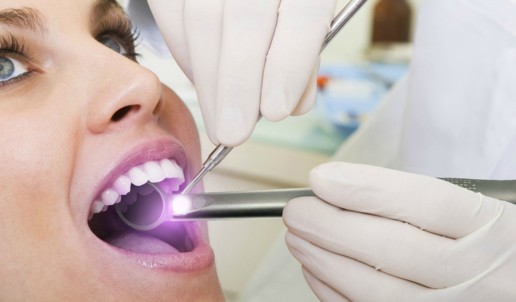
Digital X-Rays
Dental x-rays are an integral part of the management and treatment of the dental patient.
They allow the dentist access to areas between and inside the teeth, under the gums and in the jawbones. These are areas that are inaccessible to the naked eye. This permits the dentist to properly diagnose and treat any abnormalities detected by x-rays.
The most commonly used dental x-rays fall into three categories:
Periapicals
These provide visibility of the entire tooth and root, as well as the surrounding jaw bone and gums. These x-rays are used to diagnose tooth infections extending into the bone (abscesses), root fractures and general root anatomy. They are also and important tool in the treatment of gum disease as dentists are clearly able to monitor the height of bone attachment surrounding the teeth.
Bitewings
They show the crowns (parts of the teeth above the gum line). These x-rays are used in the diagnosis of cavities between the teeth.
Panoramic X-rays
The largest of the three types of x-rays. They show all the upper and lower teeth and jaws, as well as the sinuses in one x-ray. These x-rays are used I the treatment of wisdom teeth, diagnoses of disease and abnormalities in the jawbone, the placement of dental implants, and are a useful tool in the treatment of gum disease.
The frequency at which x-rays are taken depend on age, disease susceptibility and symptoms. Children may require x-rays more frequently than adults due to continuing jaw development and a higher risk of cavities. It is advisable to consult the dentist to determine each patient’s need for x-rays.

Cleaning
Dental cleaning is the non-technical term used for professional oral cleaning which encompasses the removal of hard and soft deposits from the teeth and an oral prophylaxis to polish them.
It is Important to have a dental cleaning performed by a dentist or hygienist on a regular basis to ensure continuous maintenance and good heath of the gums. A complete dental examination is usually carried out during the same visit, when X-rays may also be taken for diagnostic purposes.
Plaque is a soft sticky film consisting of a bacteria and food particles that accumulate on teeth especially around the gum line. If brushing is inadequate in this area the plaque combines with the minerals present in the saliva and foods to form a hard-calcified substance that adheres to the tooth surface. This mineralized plaque is called Calculus or Tartar, and is extremely resistant to removal by a toothbrush.

The Cleaning Procedure
Depending on the extent of tartar deposits, a dental cleaning may include up to four different procedures as follows:
- Scaling: This is the removal of all hard deposits from the root surfaces,
- Root Planing: Once the hard deposits are removed the root surface is planed smooth, in order for the gum to reattach./li>
- Polishing: A fine paste is used to remove the stains and buff the teeth.
- Fluoride Treatment: This is a gel that is applied to the teeth in order to control dental decay.
Generally our patients are seen every six months for a cleaning and check-up, although individual requirements vary. Some patient may need routine visits on a three monthly and others on a six monthly basis. Our office extends the courtesy of contacting you when it is time for your check up. Should we fail to do so however, it ultimately is your responsibility to ensure regular visits are not forgotten or missed.
Sealants
A sealant is a clear or coloured plastic material that flows into the grooves and depressions of the black teeth filling them in and rendering these areas resistant to tooth decay.
Sealants are generally placed in the children’s permanent back teeth because access to cleaning and regular oral hygiene can be problematic in the age group. They should be applied as soon as the first molars are fully erupted between six and seven years of age, as sealants are only effective to decay free teeth.
The lifespan of a sealant is generally three to five years although they can last longer. Regular dental examinations are necessary to ensure they remain intact.
Sealants offer significant protection to the biting surfaces of teeth. However other areas around the gum line and between the teeth still remain vulnerable to tooth decay and require the conventional methods of brushing and flossing to protect them. The use of sealants in conjunction with daily home care and regular check ups offer children the possibility of a cavity free life.
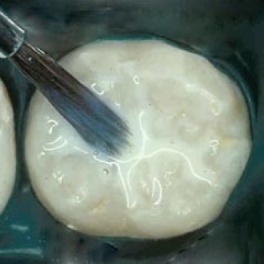
Sealants procedure
Sealants are easily placed and well tolerated by children, as they require no anesthetic. The procedure is as follows:
- The tooth surface is cleaned to remove plaque and debris.
- A gel is applied that allows the sealant to penetrate and adhere.
- Liquid sealant is allowed to flow into the groves.
- A light is placed over the liquid sealant to harden it and allow it to rest.
Whitening
Tooth whitening is a safe, pain free and cost effective way to achieve whiter teeth and a dazzling smile. A dental evaluation is necessary to determine susceptibility for this treatment to ensure the greatest success.
Teeth can become discolored from tea, coffee, smoking and aging. These are considered extrinsic or superficial stains and respond well to treatment. Discoloration caused by excess fluoride or tetracycline use us internal and doesn’t respond well to treatment. Tooth whitening does not change the colour of existing fillings, crowns or veneers and is not recommended for patient with sensitive teeth or periodontal disease.
This system can sometimes irritate the gums. Tooth whitening is not permanent and touch ups may be necessary once per year depending on habits and susceptibility to staining. This method of enhancing the appearance of teeth has no adverse effects on tooth structure or existing restorations. Tooth or gum sensitivity experienced by some patients is generally not permanent. The treatment is generally painless and requires no anesthetic making it an efficient and well-tolerated method of enhancing the appearance of teeth.
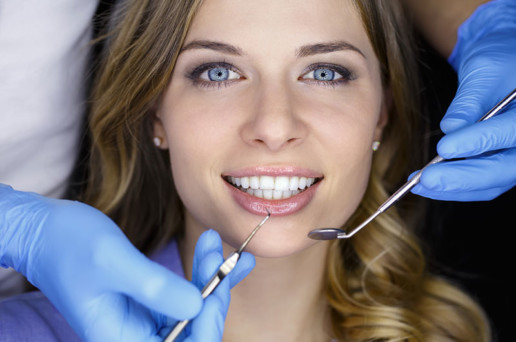
Whitening procedure
The process for treatment involves impressions of upper and lower teeth to fabricate custom-fitted trays
- The patient receives the trays, whitening materials and instructions for home use. This involves wearing the trays with treatment material during the night for 2 weeks.
- The dentist monitors the patient during this time to assess progress or concerns. This home treatment method of tooth whitening is the most popular.
- Should the patient request immediate treatment; stronger concentrations of whitening material can be applied in the dental office under the supervision of the dentist.
Extractions
The goal of modern dentistry is to preserve the natural teeth for a lifetime; It is a well-known fact that the loss of a single tooth can have an impact not only on your dental health but also on your appearance.
Most tooth extractions can be prevented; however there are certain conditions under which tooth removal is necessary for the proper health and function of the oral cavity.
Generally most tooth extractions are simple. The offending tooth is loosened and removed from the mouth. In the case of broken down or multi rooted teeth a surgical approach is under taken, where the gum is released and the tooth sectioned to facilitate its removal.
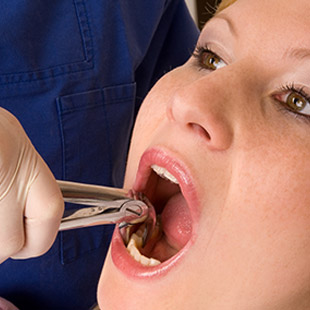
When Extractions Are Necessary
Here are a few reasons why teeth have to be removed:
- Decay.
- Gum disease.
- Relieve crowding prior to braces.
- Teeth fractured in sports or other accidents.
- Impacted teeth as in wisdoms.
Mouthguards
Mouth guards are acrylic appliances fitted over the teeth and are designed to protect both the soft and hard tissues in and around the mouth from injury.
Much emphasis has been placed on the safety of athletes during sports making different forms of protection necessary to ensure the well being of the participant. Often a mouth guard is the one piece of safety equipment that is overlooked.
There are several types of commercial mouth guards that can be purchased at sport stores. For the best protection we recommend a custom fabricated mouth guard to safeguard not only the natural structures of the oral cavity but also any orthodontic wires and other expensive dental work such as bridges and crowns. The custom fabrication consists of an accurate impression taken of the teeth and surrounding tissues.
Any child or adult participating in sport activities should always wear mouth protection. It is a cost effective and trauma free method to guard against damage to the oral cavity.
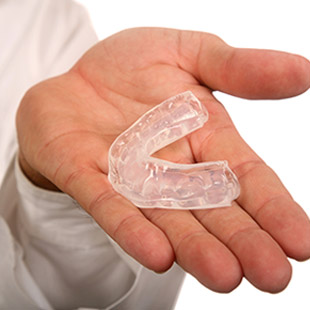
Purpose of mouthguards and how they protect soft tissue
- Prevent cuts and bruises by protecting lips, tongue, cheeks and gums.
- Soft acrylic absorbs impact to front teeth preventing evulsion and breaking and chipping.
- Dissipating force to the mandible preventing brain and concussion.
- Prevents dislocation of T.M.J. by cushioning the jaws.
- Avoids jaw fracture.

